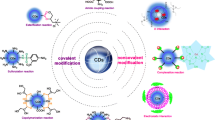Abstract
One of the most intriguing and important aspects of biological chemistry is how the deceptively simple process of electron transfer (ET) is utilized and organized by macromolecules that perform some of the most sophisticated chemistry known to man. The fundamental principles of ET are now fairly well understood, and interest is being focused instead on the mechanisms by which ET in proteins is coupled to chemical reactions such as ion transport and catalysis. Protein film voltammetry provides a powerful way to investigate these problems. The protein is immobilized on an electrode as an absorbed electroactive film and by applying a potential, electrons are driven in and out of the active sites. Signals are obtained from extremely small sample quantities (monolayer coverage or less), and from these it is possible to detect and characterize active sites and to resolve complex reactions. Experiments may be carried out over a wide dynamic range: for example, with cyclic voltammetry scan rates exceeding 1000 V/s can be used to observe coupling reactions that occur in the sub-millisecond time domain. For enzymes, fast cycles can be used to “trap” intermediates; alternatively steady-state catalysis and redox-linked activation can be studied using slow scan rates or potential step methods. This paper explains the concept of protein film voltammetry and illustrates how it can be applied to some complex problems in biological redox chemistry.
Similar content being viewed by others
REFERENCES
Armstrong, F.A., Heering, H.A., and Hirst, J., Chem. Soc. Rev., 1997, vol. 26, p. 169.
Lecompte, S., Wackerbarth, H., Soulimane, T., et al., J. Am. Chem. Soc., 1998, vol. 120, p. 7381.
Feng, Z.Q., Imabayashi, S., Kakiuchi, T., and Niki, K., J. Electroanal. Chem. Interfacial Electrochem., 1995, vol. 394, p. 149.
Nassar, A.–E., Zhang, Z., Fu, N., and Rusling, J.F., J. Phys. Chem. B, 1997, vol. 101, p. 2224.
Laviron, E., Electroanalytical Chemistry, Bard, A.J., Ed., New York: Marcel Dekker, 1982, vol. 12, p. 53.
Bond, A.M. and Oldham, K.B., J. Phys. Chem., 1983, vol. 87, p. 2492.
Heering, H.A., Weiner, J.H., and Armstrong, F.A., J. Am. Chem. Soc., 1997, vol. 120, p. 11628.
Heering, H.A., Hirst, J., and Armstrong, F.A., J. Phys. Chem. B, 1998, vol. 102, p. 6889.
Armstrong, F.A., Cox, P.A., Hill, H.A.O., et al., J. Electroanal. Chem., 1987, vol. 217, p. 331.
Krishtalik, L.I., Biochim. Biophys. Acta, 2000, vol. 1458, p. 6.
Williams, R.J.P., J. Theor. Biol., 1961, vol. 1, p. 1.
Fetter, J.R., Qian, J., Shapleigh, J., et al., Proc. Natl. Acad. Sci. USA, 1995, vol. 92, p. 1604.
Shen, B., Martin, L.L., Butt, J.N., et al., J. Biol. Chem., 1993, vol. 268, p. 25 928.
Hirst, J., Duff, J.L.C., Jameson, G.N.L., et al., J. Am. Chem. Soc., 1998, vol. 120, p. 7085.
Chen, K., Hirst, J., Camba, R., et al., Nature, 2000, vol. 405, p. 814.
Armstrong, F.A., George, S.J., Thomson, A.J., and Yates, M.G., FEBS Lett., 1988, vol. 234, p. 107.
George, S.J., Richards, A.J.M., Thomson, A.J., and Yates, M.G., Biochem. J., 1984, vol. 224, p. 247.
Stephens, P.J., Jensen, G.M., Devlin, F.J., et al., Biochemistry, 1991, vol. 30, p. 3200.
Bentrop, D., Bertini, I., Borsari, M., et al., Angew. Chem. Int. Ed. Engl., 2000, vol. 39, p. 3620.
Stout, C.D., J. Biol. Chem., 1993, vol. 268, p. 25 920.
Stout, C.D., Stura, E.A., and McRee, D.E., J. Mol. Biol., 1998, vol. 278, p. 629.
Schipke, C.G., Goodin, D.B., McRee, D.E., and Stout, C.D., Biochemistry, 1999, vol. 38, p. 8228.
Luecke, H., Biochim. Biophys. Acta, 2000, vol. 1460, p. 133.
Hirst, J. and Armstrong, F.A., Anal. Chem., 1998, vol. 70, p. 5062.
Lubben, M., Prutsch, A., Mamat, B., and Gerwert, K., Biochemistry, 1999, vol. 38, p. 2048.
Ackrell, B.A.C., Johnson, M.K., Gunsalus, R.P., and Cecchini, G., Chemistry and Biochemistry of Flavoenzymes, Muller, F., Ed., Boca Raton: CRC, 1992, vol. 3, p. 229.
Iverson, T.M., Luna–Chavez, C., Cecchini, G., and Rees, D.C., Science, 1999, vol. 284, p. 1961.
Sucheta, A., Cammack, R., Weiner, J.H., and Armstrong, F.A., Biochemistry, 1993, vol. 32, p. 5455.
Sucheta, A., Ackrell, B.A., Cochran, B., and Armstrong, F.A., Nature, 1992, vol. 356, p. 361.
Ackrell, B.A.C., Armstrong, F.A., Cochran, B., et al., FEBS Lett., 1993, vol. 326, p. 92.
Hirst, J., Sucheta, A., Ackrell, B.A.C., and Armstrong, F.A., J. Am. Chem. Soc., 1996, vol. 118, p. 5031.
Hirst, J., Ackrell, B.A.C., and Armstrong, F.A., J. Am. Chem. Soc., 1996, vol. 119, p. 7434.
Pershad, H.R., Hirst, J., Cochran, B., et al., Biochim. Biophys. Acta, 1999, vol. 1412, p. 262.
Mairanovski, S.G., Klyukina, L.D., and Frumkin, A.N., Dokl. Akad. Nauk SSSR, 1961, vol. 141, p. 147.
Frumkin, A.N., Electrochim. Acta, 1964, vol. 9, p. 465.
Heffron, K., Léger, C., Rothery, R.A., et al., Biochemistry, 2001, vol. 40, p. 3117.
El Kasmi, A., Wallace, J.M., Bowden, E.F., et al., J. Am. Chem. Soc., 1998, vol. 120, p. 225.
Lvov, Y., Lu, Z., Schenkman, J.B., et al., J. Am. Chem. Soc., 1998, vol. 120, p. 4073.
Bayachou, M., Lin, R., Cho, W., and Farmer, P.J., J. Am. Chem. Soc., 1998, vol. 120, p. 9888.
Feng, Z.Q., Imabayashi, S., Kakiuchi, T., and Niki, K., J. Chem. Soc. Faraday Trans., 1997, vol. 93, p. 1367.
Author information
Authors and Affiliations
Rights and permissions
About this article
Cite this article
Armstrong, F.A. Protein Film Voltammetry: Revealing the Mechanisms of Biological Oxidation and Reduction. Russian Journal of Electrochemistry 38, 49–62 (2002). https://doi.org/10.1023/A:1013786328075
Issue Date:
DOI: https://doi.org/10.1023/A:1013786328075




